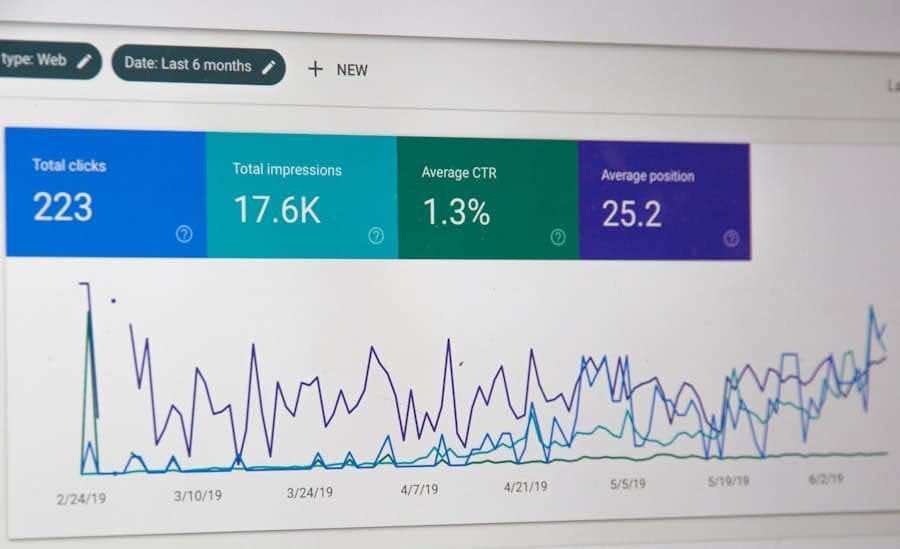In an era where social enterprises and non-profit organisations are increasingly held accountable for their outcomes, the need for effective impact measurement tools has never been more pronounced. These tools serve as essential instruments for assessing the effectiveness of initiatives aimed at generating social, environmental, or economic benefits. By quantifying the impact of various programmes, organisations can not only demonstrate their value to stakeholders but also refine their strategies to enhance future outcomes.
The landscape of impact measurement is diverse, encompassing a range of methodologies and frameworks that cater to different sectors and objectives. The evolution of impact measurement tools has been driven by a growing recognition of the importance of evidence-based decision-making. Funders, policymakers, and community members are demanding transparency and accountability, prompting organisations to adopt systematic approaches to measure their impact.
This shift has led to the development of various tools that can capture both quantitative and qualitative data, enabling organisations to tell compelling stories about their work while also providing hard evidence of their achievements. As we delve deeper into the realm of impact measurement, it becomes clear that these tools are not merely optional; they are integral to the sustainability and growth of organisations committed to making a difference.
Summary
- Impact measurement tools are essential for assessing the effectiveness and outcomes of social and environmental initiatives.
- Understanding the importance of impact measurement helps organisations to demonstrate accountability, improve decision-making, and attract funding and support.
- Types of impact measurement tools include qualitative and quantitative methods, such as surveys, interviews, case studies, and financial metrics.
- When choosing the right impact measurement tool, it is important to consider the specific goals, resources, and stakeholders of the initiative.
- Best practices for using impact measurement tools include setting clear objectives, engaging stakeholders, using multiple tools, and regularly reviewing and adapting the measurement process.
Understanding the Importance of Impact Measurement
The significance of impact measurement cannot be overstated, particularly in a world where resources are finite and competition for funding is fierce. By systematically measuring their impact, organisations can identify what works and what does not, allowing them to allocate resources more effectively. This process not only enhances operational efficiency but also fosters a culture of continuous improvement.
For instance, a charity focused on education might discover through impact measurement that certain teaching methods yield better student outcomes than others, prompting a shift in their approach to curriculum development. Moreover, impact measurement plays a crucial role in building trust with stakeholders. Donors and investors are increasingly looking for evidence that their contributions are making a tangible difference.
By employing robust measurement tools, organisations can provide transparent reports that highlight their successes and challenges. This transparency not only strengthens relationships with existing supporters but also attracts new funding opportunities. In essence, effective impact measurement serves as a bridge between an organisation’s mission and its ability to secure the necessary resources to achieve that mission.
Types of Impact Measurement Tools

The landscape of impact measurement tools is vast and varied, encompassing a range of methodologies designed to suit different organisational needs and contexts. One of the most widely used frameworks is the Logic Model, which provides a visual representation of how an organisation’s activities lead to desired outcomes. This tool helps organisations clarify their goals and articulate the pathways through which they intend to achieve them.
By mapping out inputs, activities, outputs, outcomes, and impacts, organisations can better understand the relationships between their actions and the results they produce. Another popular tool is Social Return on Investment (SROI), which quantifies social value in monetary terms. SROI analysis allows organisations to compare the financial costs of their initiatives against the social benefits generated, providing a clear picture of their overall effectiveness.
For example, a community health programme might use SROI to demonstrate how every pound invested leads to significant savings in healthcare costs due to improved public health outcomes. Additionally, qualitative methods such as case studies and interviews can complement quantitative data by providing rich narratives that illustrate the human impact of an organisation’s work.
How to Choose the Right Impact Measurement Tool
Selecting the appropriate impact measurement tool is a critical step for any organisation seeking to assess its effectiveness. The choice largely depends on several factors, including the specific goals of the organisation, the nature of its programmes, and the resources available for evaluation. It is essential for organisations to first define what they aim to measure—whether it be social change, economic benefits, or environmental sustainability—before exploring the various tools at their disposal.
Organisations should also consider the level of complexity they are prepared to manage. Some tools require extensive data collection and analysis capabilities, while others may be more straightforward and user-friendly. For instance, smaller organisations with limited resources might opt for simpler frameworks like the Logic Model or basic surveys that provide immediate feedback on programme effectiveness.
In contrast, larger organisations with more sophisticated evaluation capacities may choose comprehensive methodologies like SROI or Randomised Control Trials (RCTs) that offer deeper insights but require more significant investment in time and expertise.
Best Practices for Using Impact Measurement Tools
To maximise the effectiveness of impact measurement tools, organisations should adhere to several best practices that enhance both the quality of data collected and the utility of findings. Firstly, it is crucial to engage stakeholders throughout the measurement process. Involving beneficiaries, funders, and staff in discussions about what constitutes success can lead to more relevant indicators and a greater sense of ownership over the evaluation process.
This collaborative approach not only enriches the data collected but also fosters a culture of accountability within the organisation. Secondly, organisations should ensure that they establish clear metrics from the outset. Defining specific, measurable indicators aligned with organisational goals allows for more accurate tracking of progress over time.
For example, if an organisation aims to improve literacy rates among children, it might set specific targets such as increasing reading proficiency scores by a certain percentage within a defined timeframe. Regularly reviewing these metrics can help organisations stay on track and make necessary adjustments to their programmes as needed.
Common Challenges in Impact Measurement

Despite its importance, impact measurement is fraught with challenges that can hinder effective implementation. One significant obstacle is the difficulty in capturing intangible outcomes such as changes in attitudes or behaviours. While quantitative data can provide valuable insights into measurable outputs, qualitative changes often require more nuanced approaches that can be harder to quantify.
For instance, measuring improvements in community cohesion or individual empowerment may necessitate in-depth interviews or focus groups, which can be resource-intensive. Another common challenge is the issue of data quality and reliability. Organisations may struggle with inconsistent data collection methods or lack sufficient training for staff involved in evaluation efforts.
This inconsistency can lead to skewed results that do not accurately reflect an organisation’s impact. To mitigate this risk, organisations should invest in training for staff on data collection techniques and establish standardised protocols for gathering information across different programmes.
Examples of Successful Implementation of Impact Measurement Tools
Numerous organisations have successfully implemented impact measurement tools to enhance their effectiveness and demonstrate their value to stakeholders. One notable example is the charity Teach For All, which operates in multiple countries with a mission to expand educational opportunities for children from low-income backgrounds. By employing a combination of Logic Models and SROI analysis, Teach For All has been able to quantify its impact on student achievement while also illustrating the broader societal benefits of its work.
Another compelling case is that of the social enterprise FareShare, which tackles food waste while addressing food insecurity in communities across the UK. FareShare utilises a robust impact measurement framework that includes both quantitative metrics—such as the amount of food redistributed—and qualitative assessments from beneficiaries about how access to food has improved their lives. This dual approach has enabled FareShare to effectively communicate its impact to funders and partners while continuously refining its operations based on feedback from those it serves.
Conclusion and Future Trends in Impact Measurement Tools
As we look towards the future of impact measurement tools, several trends are emerging that promise to shape this field significantly. One such trend is the increasing integration of technology into impact measurement processes. With advancements in data analytics and artificial intelligence, organisations are now able to collect and analyse vast amounts of data more efficiently than ever before.
This technological evolution allows for real-time monitoring of programmes and more dynamic reporting capabilities. Additionally, there is a growing emphasis on participatory approaches to impact measurement that prioritise the voices of beneficiaries in shaping evaluation frameworks. This shift towards inclusivity not only enhances the relevance of measurements but also empowers communities by involving them in decision-making processes related to their own development.
As these trends continue to evolve, it is clear that impact measurement will remain a vital component in ensuring that organisations can effectively demonstrate their contributions towards creating positive change in society.
If you are interested in learning more about how to measure the impact of your business activities, you may also find the article How playing games can improve productivity to be insightful. This article discusses how incorporating games into the workplace can lead to increased productivity and employee engagement. By using innovative methods like gamification, businesses can track and measure the impact of their initiatives in a fun and interactive way.
FAQs
What are Impact Measurement Tools?
Impact measurement tools are methods and techniques used to assess and evaluate the social, environmental, and economic impact of a project, program, or organization. These tools help to quantify and understand the outcomes and effects of an intervention or initiative.
Why are Impact Measurement Tools important?
Impact measurement tools are important because they provide valuable insights into the effectiveness and success of a project or program. They help organizations to understand the real-world impact of their work, make informed decisions, and improve their performance.
What are some examples of Impact Measurement Tools?
Examples of impact measurement tools include social return on investment (SROI) analysis, cost-benefit analysis, logic models, theory of change, key performance indicators (KPIs), impact frameworks, and impact assessment surveys.
How are Impact Measurement Tools used?
Impact measurement tools are used by organizations to collect, analyze, and interpret data related to their activities and outcomes. This data is then used to assess the impact of their work, identify areas for improvement, and communicate their achievements to stakeholders.
Who uses Impact Measurement Tools?
Impact measurement tools are used by a wide range of stakeholders, including non-profit organizations, social enterprises, government agencies, philanthropic foundations, impact investors, and corporate social responsibility (CSR) teams. These tools are also used by evaluators, researchers, and consultants.
